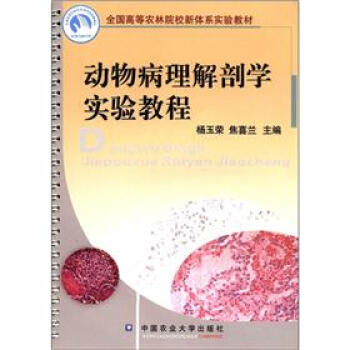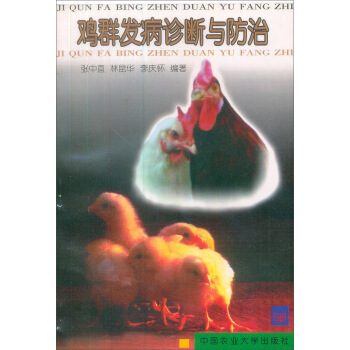

具体描述
内容简介
《植物病害分子流行学导论(英文版)》主要内容包括:Protein—based marker:Allozymes、DNA band—based markers、DNA sequence、References and suggested readings、CltAPTER 3 PCR—BASED TECHNIQUES、Classical PCR、Allele—specific PCR、Nested PCR、Multiplex PCR等等。目录
PART Ⅰ INTRoDUCTIONCHAPTER 1 INTRoDUCl’ION TO MoLECULAR EPIDEMIOLoGY
1—1 Basic concept of molecular epidemiology
1—2 Why molecular epidemiology
1—3 Comparisons between classical and molecular methods in epidemiology
1—4 Working approaches of molecular epidemiology
1—5 About the book
References and suggested readings
PART Ⅱ MoLECULAR TECHNIQUES USED IN EPIDEMIOLOGY
CHAPTER 2 MOLECULAR MARKERS
2—1 Protein—based marker:Allozymes
2—2 DNA band—based markers
2—3 DNA sequence
References and suggested readings
CltAPTER 3 PCR—BASED TECHNIQUES
3—1 Classical PCR
3—2 Allele—specific PCR
3—3 Nested PCR
3—4 Multiplex PCR
References and suggested readings
CHAPTER 4 QUANTITATIVE REAL‘TIME PCR
4—1 Introduction
4—2 Basic real—time PCR methods
4—3 Primer and probe design for real—time PCR
4—4 Result analysis
4—5 Applications of real—time PCR
References and suggested readings
CHAmR 5 PRIMER I)ESIGN
5—1 Some basic concepts for primer design
5—2 Computer programs used for primer design
5—3 An example of primer design using a computer program
5—4 Degenerated PCR primers
PART Ⅲ MoLECULAR EPIDEMIOLOGY oF PLANT DISEASES
CHAPTER 6 PATHoGEN IDENTIFICATIoN AND DISEASE DIAGNoSIS
6—1 Introduction
6—2 Use of species—specific genes or DNA regions for developing PCR primers
6—3 Use of anonymous unique DNA regions for developing PCR primers
6—4 PCR inhibitors
Summary
References and suggested readings
CHAPTER 7 FUNGAL PATHoGEN REPRoDUCTIVE MoDES
7—1 Frequencies of genotypes
7—2 Deviation from Hardy—Weinberg expectations
7—3 Parsimony Tree Length Permutation(PTLPT)
7—4 Index of association(IA)
References and suggested readings
CHAPTER 8 DETEMINATIoN AND QUANTIFICATION OF INITIAL INOCULUM OF EPIDEMICS
8—1 Introduction
8—2 Molecular methods for quantification of initial inoculum
8—3 Examples of quantification of initial inoculum using molecular methods
Remarkable conclusion
References and suggested readings
CHPTER 9 TEMpORAL AND SPATIAL DEVELOPMENT oF PATHoGEN POPULATIoNS
9—1 Introduction
9—2 Molecular approaches
9—3 Monitoring pathogen population structures
9—4 Studying spatial—temporal dynamics of pathogen populations
9—5 Providing information needed for disease management
Summary
References and suggested readings
CHAPTER 10 PATHoGEN LONG—DISTANCE DIsPERSAL AND MIGRATION
10—1 Introduction
10—2 Pathogen lon9—distance dispersal and disease epidemics
10—3 Traditional methods to determine or infer pathogen lon9—distance dispersal
10—4 Molecular methods to study pathogen lon9—distance dispersal
10—5 Examples
Summary
……
PART IV METHODOLOGY OF DATA ANLYSIS
INDEX
前言/序言
用户评价
我对这本书最感兴趣的点在于其对“时间与空间”的整合处理能力。植物病害的流行本质上是一个时空动态过程,而分子信息正是解析这个动态过程的关键。我期待书中能有专门的章节讨论如何利用分子钟(Molecular Clock)技术来估算病原体的演化速率和起源时间,这对于理解重大疫情的爆发节点至关重要。同时,地理信息系统(GIS)与分子数据的结合也是分子流行学的重要分支,我希望看到如何利用这些分子标记来精确定位病害的引入路径和扩散热点。如果作者能结合全球范围内的案例研究,展示分子流行学如何成功地干预了如小麦锈病、柑橘溃疡病等重大全球性病害的防控,那么这本书的价值将不可估量。这种结合了生命科学、数学建模和地理科学的跨学科视角,正是我在寻找的。这本书如果能做到这一点,那它就超越了一般的专业教材,而成为一个研究范式的展示窗口。
评分作为一名习惯了阅读英文专业文献的研究人员,我非常看重其英文原版的严谨性和国际视野。通常,英文原版在术语的规范性、引用的前沿性上更有保证。对于“分子流行学”这个专业性极强的领域,细节的精确性是成败的关键。我希望这本书在探讨病原体变异性时,能够细致区分不同地理区域间的遗传差异,并解释这些差异如何影响病原体的生物学特性,例如毒力或对杀菌剂的敏感性。光盘部分的使用体验也至关重要,如果它包含的是高分辨率的分子图谱、交互式数据可视化工具,或者是一些经典实验的视频演示,那么它将极大地提升学习效率。如果光盘只是简单地附带了PDF文件,那就显得有些敷衍了。一本好的导论,应该能将复杂的分子数据“可视化”,让读者能直观地感受到分子变异是如何驱动群体水平的流行动态变化的。
评分这本《植物病害分子流行学导论》看起来像是为那些想深入了解病原体如何传播和演变,并希望在分子层面上对其进行控制的科研人员或高级学生量身定制的。从书名来看,它很可能涵盖了现代植物病理学中几个非常前沿和关键的领域。我猜想,它会详细阐述从基因组学到蛋白组学的各种工具如何被用来追踪病原菌、病毒或线虫的移动和变异。这本书应该不会停留在传统的宏观描述层面,而是会深入到病原体入侵宿主细胞的分子机制,以及宿主如何激活或逃避免疫反应的细节。特别是“分子流行学”这个概念,暗示了书中会对如何利用分子标记(比如SNP、微卫星)来构建病原体的种群遗传学图谱有深入的探讨。我个人很期待看到它如何结合流行病学模型和分子数据,来预测和管理新出现的或耐药的植物病害。如果光盘内容丰富,我希望它能提供一些实际操作的案例分析,比如如何处理原始测序数据,或者如何运行一些经典的流行病学模拟软件。总的来说,这本书的深度和专业性,应该能满足那些想从基础研究走向实际病害管理策略的专业人士的需求,它应该是一本严谨的工具书,而不是通识读物。
评分这本书的标题提示了一个深度融合的学科方向,我关注的是它是否能清晰地阐述“分子”如何影响“流行学”的宏观格局。很多病理学研究侧重于细胞或个体病害的机制,而流行学研究则侧重于群体感染的数学模型。如何用分子证据来校准或驱动这些模型,是这本书的核心挑战。我期待看到章节会介绍一些具体的分子流行学模型,例如基于有效重组率或突变率的扩散模型。如果能提供对不同植物病害系统(如真菌、细菌和病毒)的比较分析,并指出每类病原体在分子流行学研究上的独特难点和突破口,这本书的结构会更具深度。例如,病毒的快速演化速率和真菌的无性/有性繁殖模式对流行病学分析意味着截然不同的分子策略。我希望这本书不仅是知识的传授,更是一种批判性思维的训练,引导读者思考:当前我们掌握的分子数据,在多大程度上能够真正指导我们制定出更具韧性和针对性的病害管理策略。
评分拿到这本“分子流行学导论”时,我首先关注的是它是否能搭建起从实验室的试管到田间的实际应用之间的桥梁。现在很多教材往往偏向理论推导,让人感觉知识很“悬空”。我希望这本书能提供清晰的框架,解释在分子层面发现的机制——比如某个效应蛋白的功能,是如何转化为田间病害爆发的驱动力。阅读体验上,我倾向于那些逻辑清晰、图表丰富的书籍。如果它能用清晰的流程图展示分子流行病学的研究路线图,从样本采集、DNA提取、测序到数据分析,再到最终的风险评估,那将是极大的加分项。此外,对于“导论”这个定位,我希望它对初学者是友好的,至少在前几章能有效铺垫基础知识,比如常用的分子生物学技术在流行病学研究中的应用。如果它能涵盖一些新兴技术,比如基于人工智能的病害预测模型,那就更具前瞻性了。总而言之,我期望它不仅是知识的堆砌,更是一套解决实际问题的思维导引。
相关图书
本站所有内容均为互联网搜索引擎提供的公开搜索信息,本站不存储任何数据与内容,任何内容与数据均与本站无关,如有需要请联系相关搜索引擎包括但不限于百度,google,bing,sogou 等,本站所有链接都为正版商品购买链接。
© 2025 windowsfront.com All Rights Reserved. 静流书站 版权所有




















